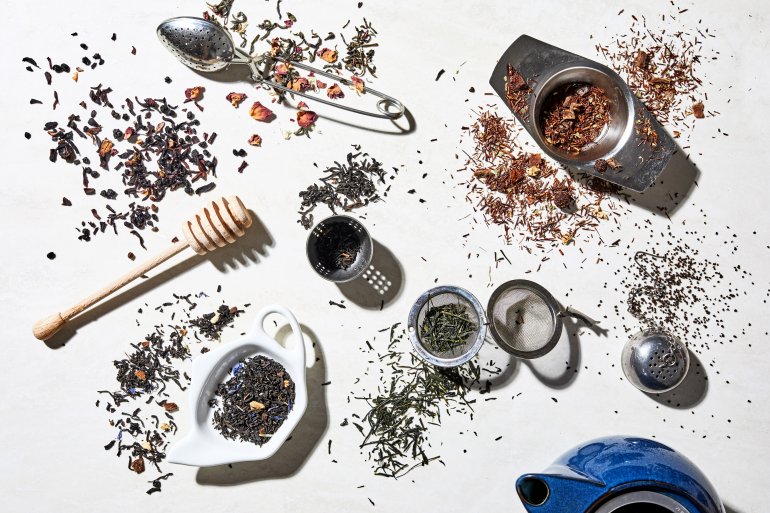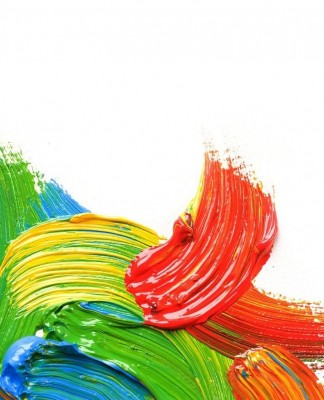By Becky Krystal / The Washington Post
I am quite the tea fanatic. The ritual of brewing tea and then savoring it sip by sip is one of the best things I do for myself, even if I’m just making a pot at my desk at the office.
What I find so great about tea – other than the self-care and beautiful flavor – is that the bar for entry is so low. While I find the advice and equipment for making good coffee absolutely head-spinning, really all you need for a nice cup of tea is some hot water, tea leaves and a way to strain out the leaves. Bliss in minutes.
Here are some tips to guarantee the perfect brew:
– Use loose-leaf tea. This is the single best way to instantly improve your cuppa. I’d say I lived the first two-thirds of my life indiscriminately gulping down cheap grocery store tea from bags only when I was sick and desperate. I also typically drowned those murky brown mugs with milk and sugar (see below), because they were bitter. As my former colleague Bonnie S. Benwick pointed out a few years ago, bitter tea can result from oversteeping, which is especially easy to do with a tea bag full of finely ground leaves. Who hasn’t plopped a tea bag in a cup and forgotten about it for too long?
Moreover, say Emilie Holmes and Ben Benton in the recently released book “Good and Proper Tea,” low-quality teas in bags have higher levels of bitter tannins, the assertiveness of which can be masked when milk proteins bind to them. They also explain that the process that creates smaller, more uniform pieces for bags does result in loss of complexity and flavor.
Loose-leaf has the advantage of being more environmentally friendly, with less packaging to dispose of. If you need the convenience of a single serving, especially when on the run, consider biodegradable filters or sachets you fill yourself. And the market is full of mugs and travel thermoses that allow for easy, portable brewing. At home, my tool of choice for a personal brew is a heatproof miniature glass pitcher with a lid similar to a Hawthorne strainer.
– Understand the main types. All teas – black, oolong, green, white – come from the same plant, Camellia sinensis. The differences are determined by where they originate and how they’re withered, oxidized, rolled, dried and sorted. Here’s a brief rundown, with flavor and color descriptions from “Good and Proper Tea” and brewing guidance from “Modern Tea: A Fresh Look at an Ancient Beverage,” by Lisa Boalt Richardson:
Black: Fully oxidized for dark, robust flavor. Water at 205 to 212 degrees, look for a constant stream of large, swirling bubbles. (Note: Some electric kettles allow you to select a temperature.) Steep 3 to 5 minutes. For Darjeeling, water at 200 to 205 degrees, look for bubbles that are connected to one another in a steady stream, and let rest for 1 minute. Steep 2 1/2 to 4 minutes.
Green: Not oxidized for fresh, vegetal flavor that can be sweet and floral or more savory. For Chinese green, water at 170 to 180 degrees, look for water bubbles the size of a peppercorn with vertical wisps of steam, and let rest for 3 minutes. Steep 2 to 3 minutes. For Japanese green, water at 160 to 170 degrees, look for pinhead-size bubbles with barely visible steam, and let rest for 5 minutes. Steep 30 seconds to 1 minute.
White: Some natural oxidation that results in a fresh, delicate flavor and a champagne-colored tea. Water at 180 to 190 degrees, look for pearl-size bubbles with good amount of steam, and let rest 2 minutes. Steep 3 to 5 minutes.
Oolong: Semi-oxidized at levels that can vary, resulting in flavors that may include delicate floral and tropical from greener varieties to others more similar to black teas. Water at 180 to 200 degrees, look for pearl-size bubbles with a good amount of steam, and let rest 1 to 2 minutes. Steep 3 to 5 minutes.
Herbal: Technically not tea, but tisane. They can come from a wide variety of plants, such as hibiscus, mint or chamomile. Water at 212 degrees, look for a constant stream of large, swirling bubbles, and no resting time. Steep 5 to 10 minutes.
– Care about your water (but don’t stress too much). I’ll admit it, even though some experts will tell you otherwise: I basically only use tap water for my tea, and I’ve never thought it tasted off. I happen to find what comes out of my Washington-area faucet just fine for drinking straight up and in tea. But that doesn’t mean everyone’s is (I, for one, have always found Florida tap water . . . less than ideal). As Holmes and Benton say, it helps to know whether your water is hard, which can lead to a cup that is chalky or even metallic-tasting, or soft, the acidity of which can make the extraction process happen too fast, leading to a bitter tea. If your water falls to either of those extremes, or just tastes off when straight-up sipped, consider filtering, either through your refrigerator’s built-in equipment, a faucet attachment or a pitcher. But I can’t with good conscience recommend bottled water given the environmental impact, not to mention the cost.
I do, however, recommend heeding the advice from Holmes and Benton to only use “freshly drawn water.” As they explain, “The best flavour is drawn out of the tea leaves using oxygen-rich water. Water that has been sitting a while, or more likely boiled over and over again, will lack oxygen, leaving your cup of tea tasting flat.”
– Brew thoughtfully. Your tea leaves need sufficient time and space to brew, so follow the guidance above by type or whatever instructions are included on the package. Holmes and Benton say leaves can expand up to five times their original dry volume when wet, which is important to keep in mind if you’re using a tea ball or infuser tongs.
Try not to overload it. Follow your heart, and stomach, when doctoring your brewed tea, but I would advise at least making sure you can appreciate the actual taste of the tea. Good tea doesn’t necessarily need a ton of milk (dairy or non-) and sugar, although I love a creamy, sweetened chai. Otherwise, I almost never add milk, and my sweetener of choice is a drizzle of honey. If you’re taking the time to make a fine pot, you might as well treat it right.
Author Information:
Becky Krystal is a food reporter and the lead writer for Voraciously. After several years as a general assignment reporter in Virginia’s Shenandoah Valley, she came to The Washington Post in 2007 to work for TV Week and Sunday Source. Her time at The Post also includes a five-year stint in the Travel section.
Source:thepeninsulaqatar.com






























